On 18 January 1945, German forces blew up the last standing bridges in Budapest. The connection between the two halves of the city was severed. When the sound of weapons faded into the distance on the 13 February 1945, a fundamental need arose for transport between the to shores.
Boats and other vessels could not cope with the demand; temporary bridges had to be built.
Several such structures were built between Buda and Pest in 1945. Manci Bridge crossed through Margit Island, while the Red Army built temporary solutions on the supports of Ferenc József Bridge and Horthy Bridge.
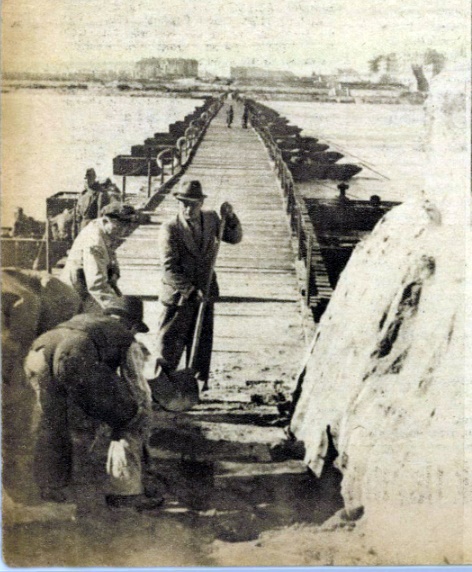
The bridge erected by the Red Army in only 24 hours in front of the Technical University in October 1945.
The structure was only intended to support pedestrian traffic (Photo: Képes Figyelő, 13 October 1945)
A crossing was also needed in the city centre, one that could be even be used by buses and trucks. The section between Petőfi and Döbrentei Square was chosen for this purpose.
Time was of the essence, as repairs to the least damaged Ferenc József Bridge could only begin once the pontoon bridge had been completed, as the temporary structure on the ruins of the old bridge could only be removed once the pontoon bridge was in place.
Assembly of the pontoon bridge bean on 17 September. Floating on pontoons the structure was technically similar to that, which had served the city before the completion of Chain bridge. A 75-metre section could be opened to allow boats to cross. Plans were to open the bridge in early November, in full knowledge that it would have to be removed for the winter as flow ice could destroy it. Experts hoped that the pontoon bridge could stay in place long enough for Kossuth bridge to be completed.
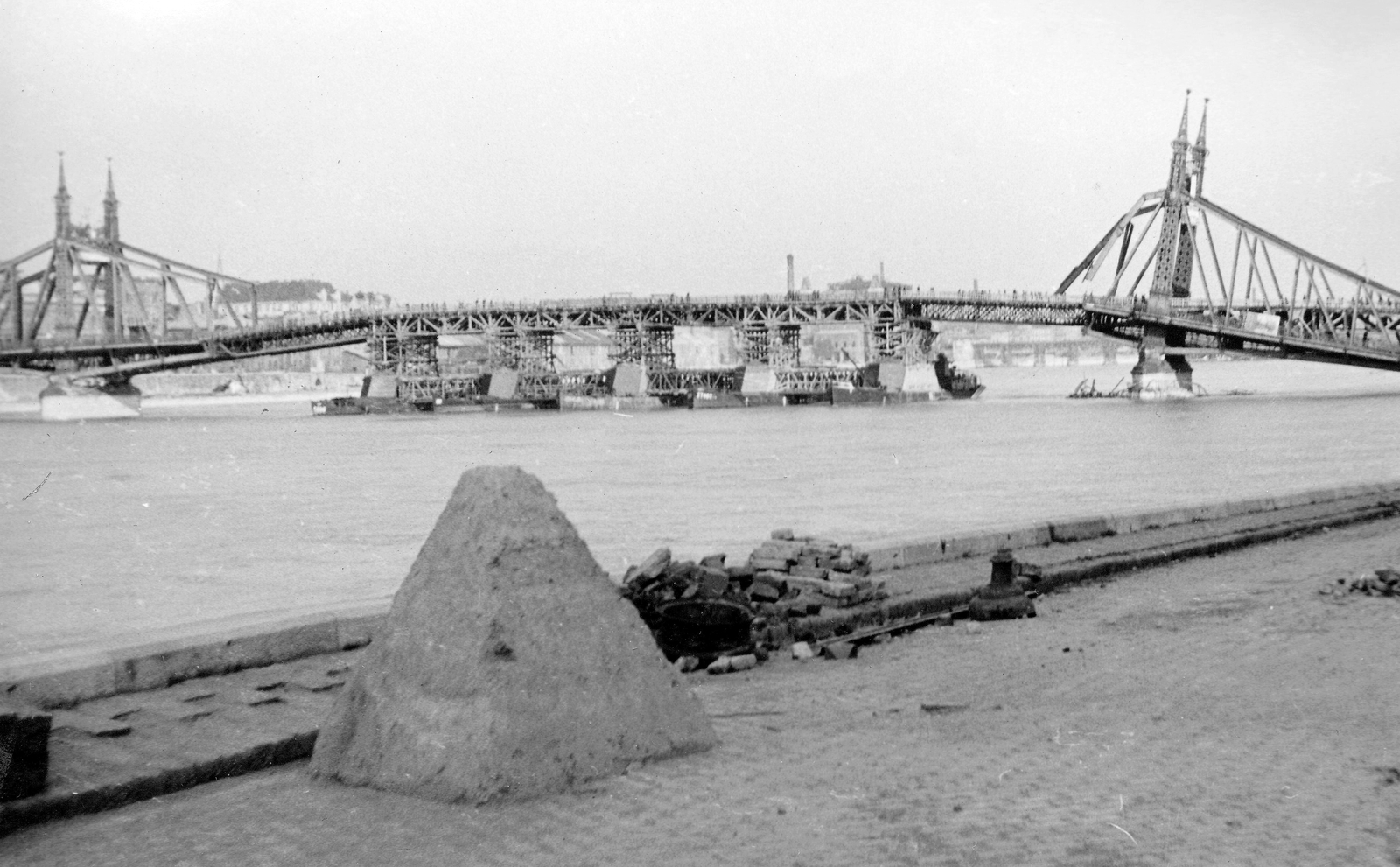
Temporary structure built on the ruins of Ferenc József Bridge in 1945 (Photo: Fortepan, Military Museum of Southern New England)
Starting from Petőfi square the pontoon bridge was supported by 34 equally placed anchored pontoons. Its roadway was 6 metres wide, with a 1.5-metre pavement on either side and thus barely narrower than Chain Bridge. It was mostly built of wood and iron reclaimed from the destroyed houses and bridges of the city, as there were barely any raw materials in the country.
The finished bridge was eventually opened on 18 November 1945. Buses and freight traffic were diverted to cross over it. The residents of Budapest had already renamed the structure Böske Bridge when it was still being built.
The newspaper Kossuth Népe wrote of the opening and the nickname on 20 November 1945:
"Popular humour has already renamed the bridge. If the pile bridge next to Margit bridge is nicknamed Manci, why couldn't the new pontoon bridge north of Erzsébet Bridge be Böske?
The new bridge officially called Petőfi Bridge was opened among heart-warming scenes: banknotes piled up in great urns at both bridgeheads to ensure clothing for the bridge builders. The workers were given to permission for the collection, and the grateful populace on its way to see the new bridge was happy to donate, to ensure the bridge builders had warm clothes for the winter."
Regular traffic began using the bridge on 21 November, and the No. 1 and 5 buses also used the bridge.
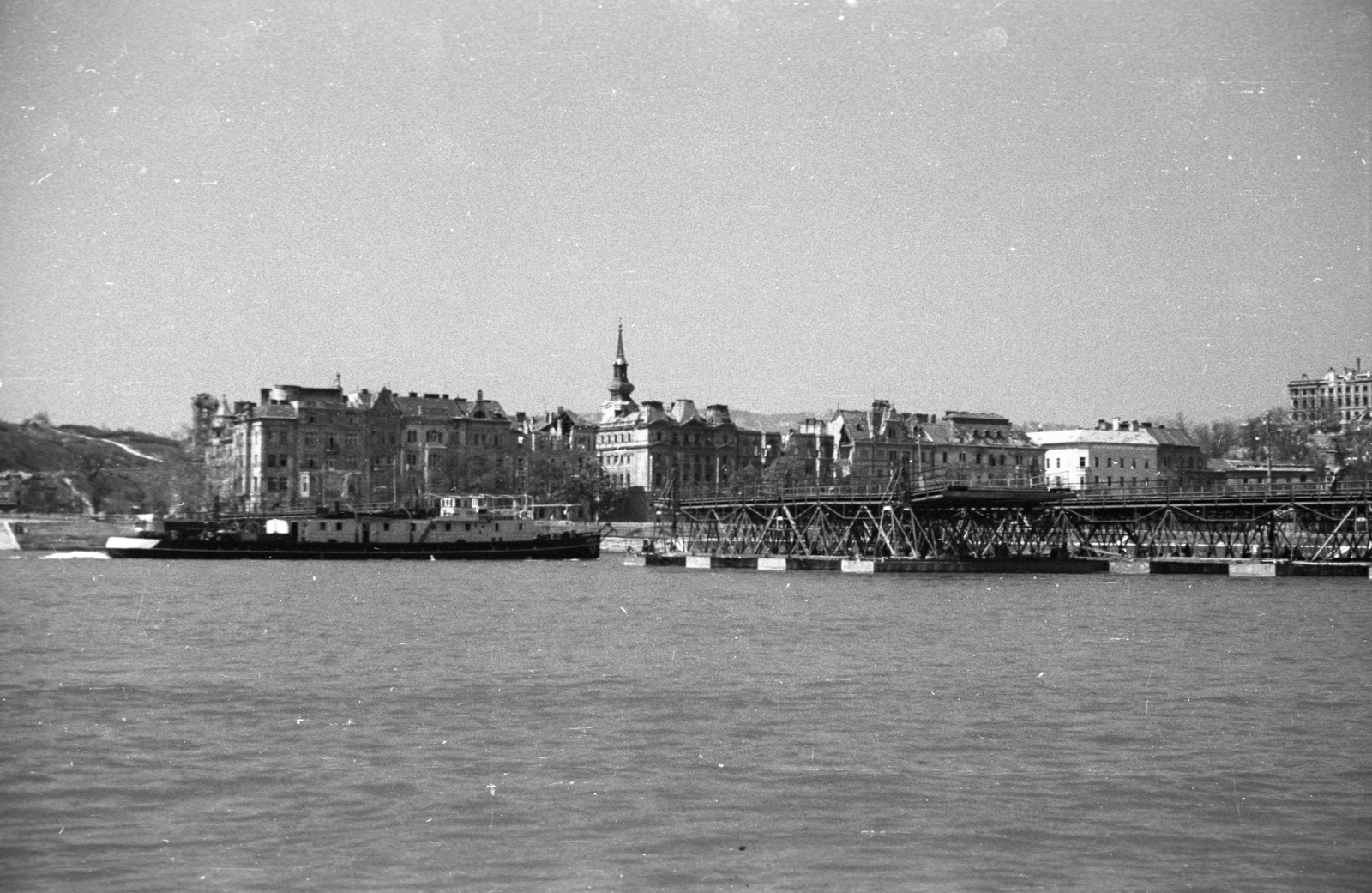
The Petőfi pontoon bridge opened for a ship in 1947 (Photo: Fortepan/No.: 78580)
Traffic on the bridge was immense, as opposed to the other temporary structures, cars and buses could also cross it. The bridge remained open until 11 January 1946, when ice flow destroyed all temporary spans. Buda and Pest were separated again for a week but on 18 January 1946 the bridge of life, Kossuth Bridge was opened.
The Petőfi pontoon bridge was later repaired and rebuilt, and served the residents of Budapest until November 1949, until Chain Bridge was repaired.
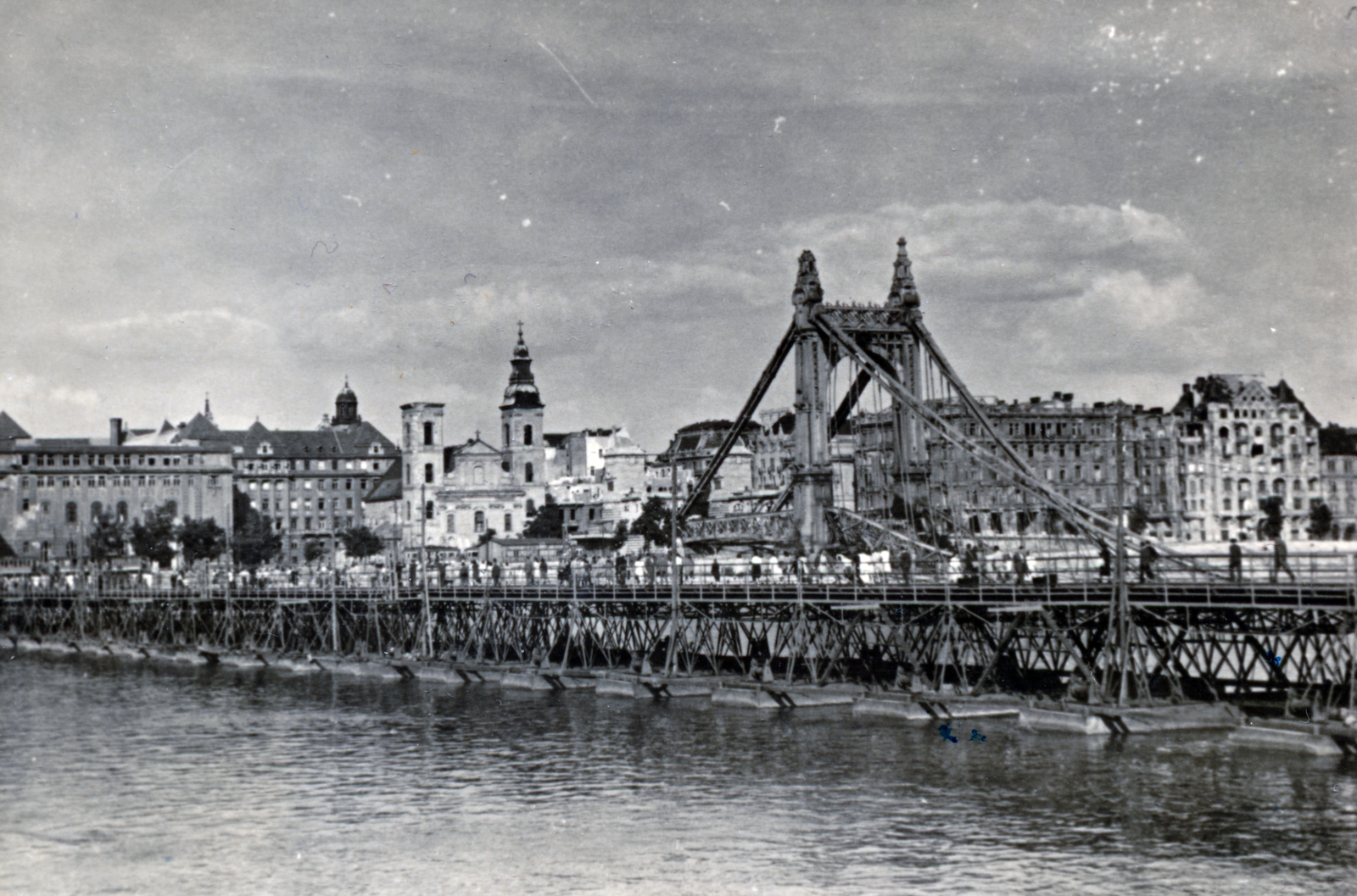
The pontoon bridge was built for looks (Photo: Fortepan/No.: 162487)
After Chain Bridge was completed on 20 November 1949, the pontoon bridge was moved to Boráros Square, where it served the residents of Budapest instead of Horthy Miklós Bridge, which had also been destroyed January 1945. The Bridge retained its original name after the square in the city centre, and the great Hungarian poet in its new location. The name passed on to the new permanent bridge built in the area, completed on 22 November 1952. Today Petőfi Bridge connects Boráros Square and Goldmann György Square.
Cover photo: Petőfi Bridge, Chain Bridge under reconstruction in the background (Photo: Fortepan, Magyar Rendőr)

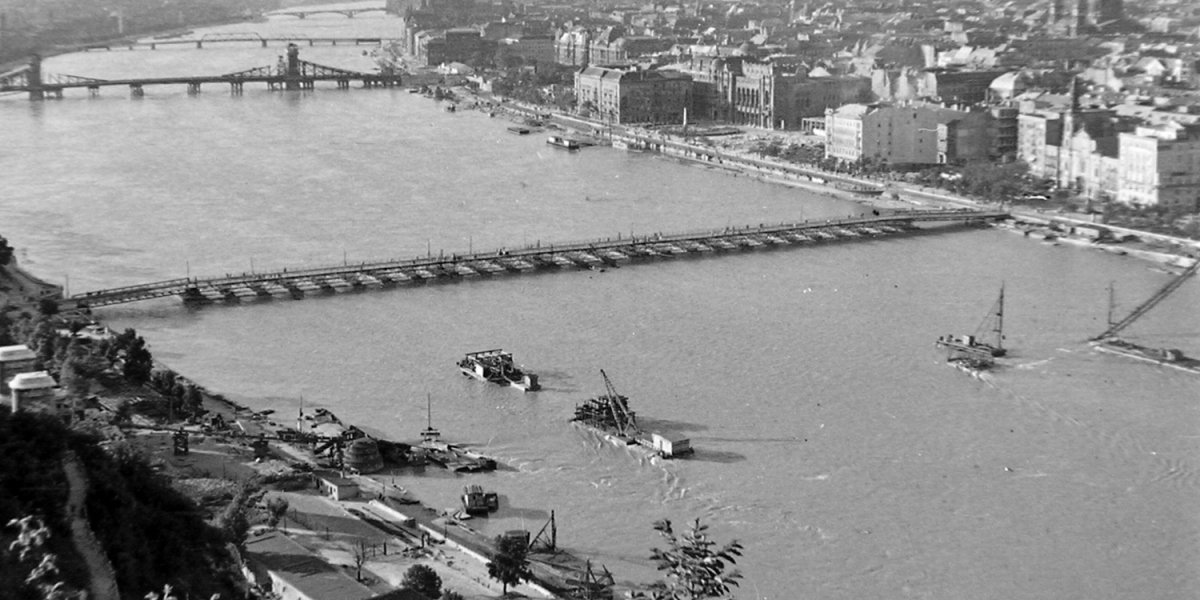



































Hozzászólások
Log in or register to comment!
Login Registration